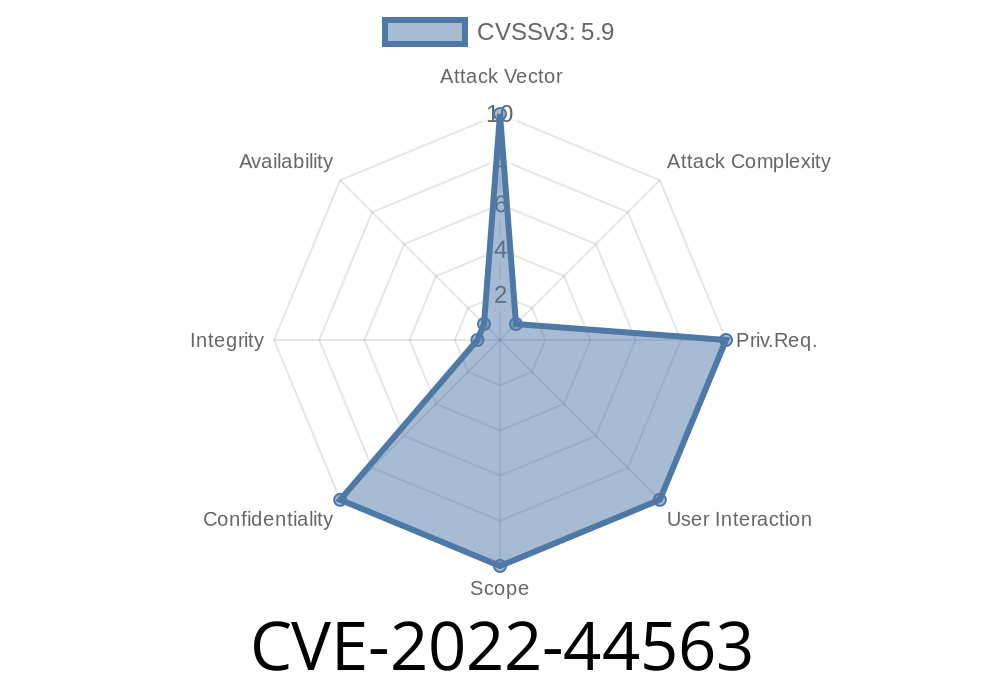CVE-2022-44563 is a recently disclosed vulnerability associated with a race condition in the SD (Secure Digital) upgrade mode of certain devices. When successfully exploited, this vulnerability can lead to critical data confidentiality issues. This post will dive into the nature of this vulnerability, provide a code snippet demonstrating its exploitation, and discuss the potential consequences. We will also provide links to the original references and discuss the importance of timely patching to ensure data security.
The Vulnerability
A race condition is a situation where the behavior of a system depends on the relative timing of events. In the context of CVE-2022-44563, this race condition occurs when two or more processes concurrently access shared resources during the SD upgrade process. The vulnerability arises due to improper synchronization between the processes, leading to an unintended alteration of data.
Exploit Details
To understand how this vulnerability can be exploited, let's examine a code snippet that demonstrates a typical scenario. The following code is written in Python:
import threading
import time
# Shared resource
sd_upgrade_data = None
def read_upgrade_data():
global sd_upgrade_data
while not sd_upgrade_data:
time.sleep(.01)
print("Read upgrade data: ", sd_upgrade_data)
def write_upgrade_data():
global sd_upgrade_data
time.sleep(.02)
sd_upgrade_data = "SensitiveData"
# Initialization
thread_read = threading.Thread(target=read_upgrade_data)
thread_write = threading.Thread(target=write_upgrade_data)
# Start threads
thread_read.start()
thread_write.start()
# Wait for threads to finish
thread_read.join()
thread_write.join()
In this code snippet, we have two threads that interact with the shared resource sd_upgrade_data. The read_upgrade_data() function reads the data during the upgrade, while the write_upgrade_data() function modifies the data concurrently. Due to the lack of proper synchronization, it is possible for the read_upgrade_data() function to access the data while it is being altered by the write_upgrade_data() function, leading to unintended outcomes.
Original References
You can find more information about CVE-2022-44563 and the associated security issues from the following sources:
1. CVE details page: https://cve.mitre.org/cgi-bin/cvename.cgi?name=CVE-2022-44563
2. NVD (National Vulnerability Database) listing: https://nvd.nist.gov/vuln/detail/CVE-2022-44563
Data Confidentiality Impact
The successful exploitation of CVE-2022-44563 may result in unauthorized access to sensitive information during the SD upgrade process. As the data is exposed to unintended access by other processes, this can lead to critical violations of data confidentiality, potentially enabling attackers to gain access to sensitive information such as passwords, personal data, or confidential system settings.
Mitigation and Recommendations
To address CVE-2022-44563 and maintain data confidentiality, it is crucial to apply patches and updates from the device manufacturers as soon as they become available. Furthermore, implementing proper synchronization measures for processes that interact with shared resources during SD upgrades can help prevent race condition-related vulnerabilities from arising.
Conclusion
CVE-2022-44563 highlights the potential risks associated with race conditions and their impact on data confidentiality during SD upgrades. By understanding the nature of this vulnerability and implementing proper security measures, organizations can avoid potential data breaches and maintain a secure environment.
Timeline
Published on: 11/09/2022 21:15:00 UTC
Last modified on: 11/10/2022 13:56:00 UTC
